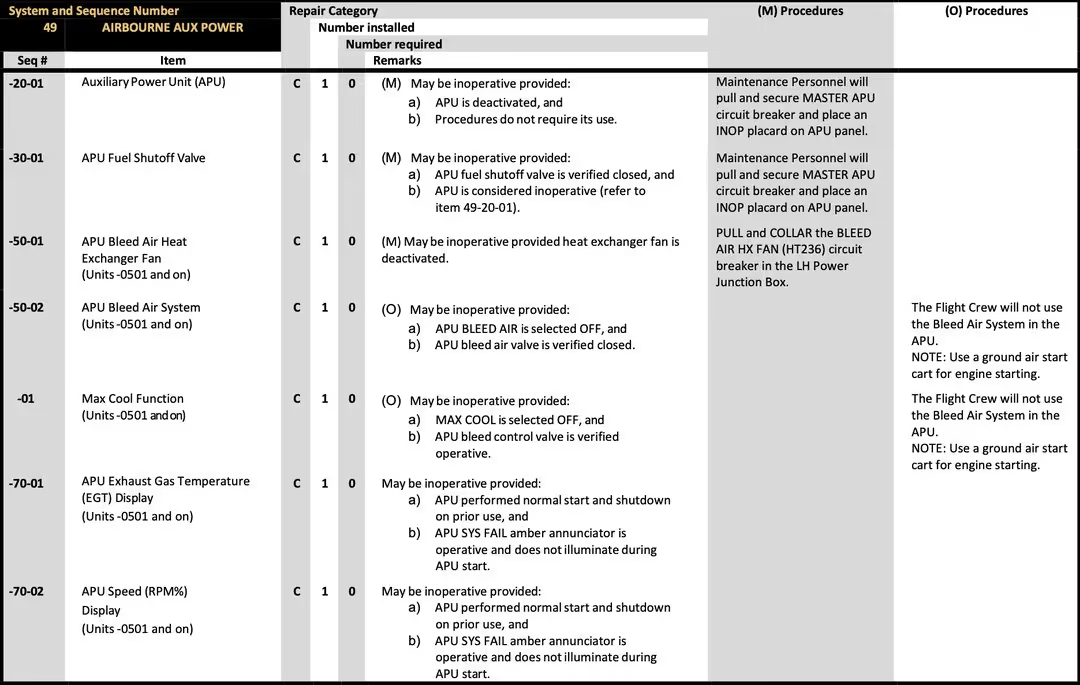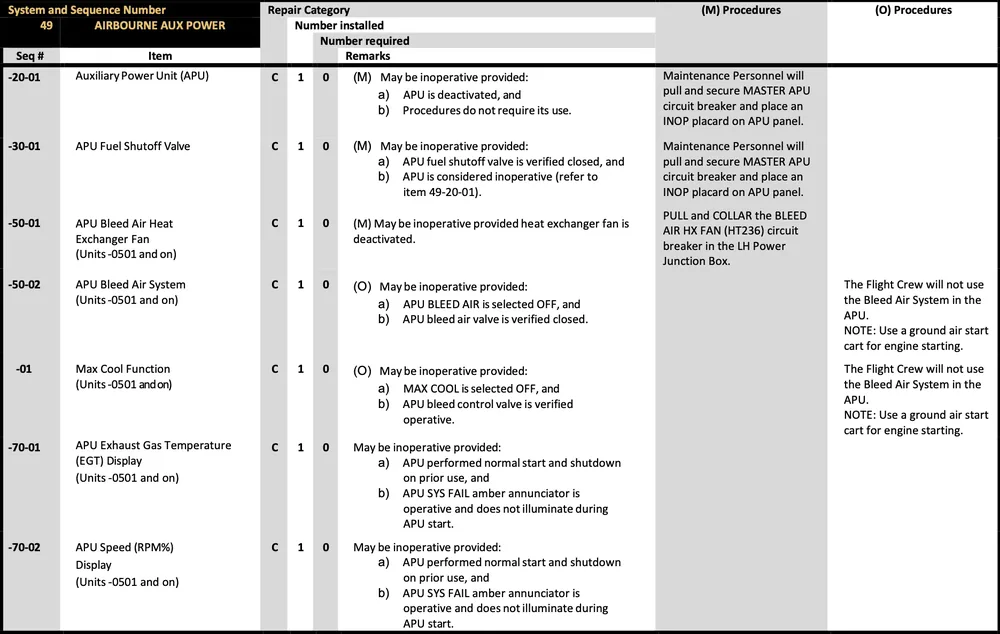What is it?
What is an MEL?
The Minimum Equipment List (MEL) enables the dispatch of an aircraft in a condition that ensures both safety and airworthiness, even when a specific system, functions, or equipment may be temporarily unavailable or inoperative.
Operational Flexibility
- Maintains revenue-earning operations without compromising flight safety.
- Allows deviation from the type certificate requirement of 100% functional equipment.
Key Limitations Without MEL
- Without the document, Air Carriers cannot deviate from the type certificate of the aircraft.
- Requires all equipment to be 100% functional, limiting operational adaptability, in other words, you can not apply 91.205 logic to a Part 135 operation.
MEL's Strategic Role and Operational Impact
- The MEL’s intent is not to grant permission to fly a broken or un-airworthy airplane to skirt around required maintenance. It is simply a method to safely defer the maintenance to another time to allow for relocation of the aircraft, parts to be delivered, and work to be scheduled, all without interrupting revenue service.
Part 91 vs Part 135
Part 91 MEL (LOA D195/D095)
For Part 91 operations, LOA D195 authorizes use of your custom, tail-specific MEL. LOA D195 is the only internationally recognized Part 91 MEL. LOA D095 authorize the operator to use a generic MMEL for their operation. For U.S. operators limited to domestic operations, this LOA is the more cost effective and faster option. However, the lack of tail specificiity makes the deferral process longer and possibly more complex.
Part 135 MEL (OpSpec D095)
For Part 135 air carriers, OpSpec D095 is the only option for an MEL. OpSpec D095 is tail-specific and custom made to your exact operation. This OpSpec can also exist as a fleet MEL where one document covers your entire type fleet
Key Concepts
MMEL vs MEL vs NEF vs CDL
MMEL is the FAA‑approved master equipment list for the type. MEL is your operator‑specific list tailored to configuration. NEF addresses interior non‑essential furnishings such as coffee-makers. CDL addresses external items affecting performance such as fairings and wheel covers. This list is often part of the Aircraft Flight Manual (AFM), Aircraft Maintenance Manual (AMM), or Manufacturer Supplementary Manual. These documents complement each other.
MEL Repair Categories
Deferred items must be repaired within their category limits: A = Manufacturer-specified, B = 3 days, C = 10 days, D = 120 days. Additional limitations may be imposed based on distance and/or number of cycles.
Example
Example MEL ATA Table
Read more about common issues with MELs for Part 91 & Part 135 Operators
MEL Order Form
Fill out the request form, and someone from our team will reach out for a quote. We will follow up with an additional questionnaire specific to your aircraft type.
Thank you! Your submission has been received!
Oops! Something went wrong while submitting the form.


